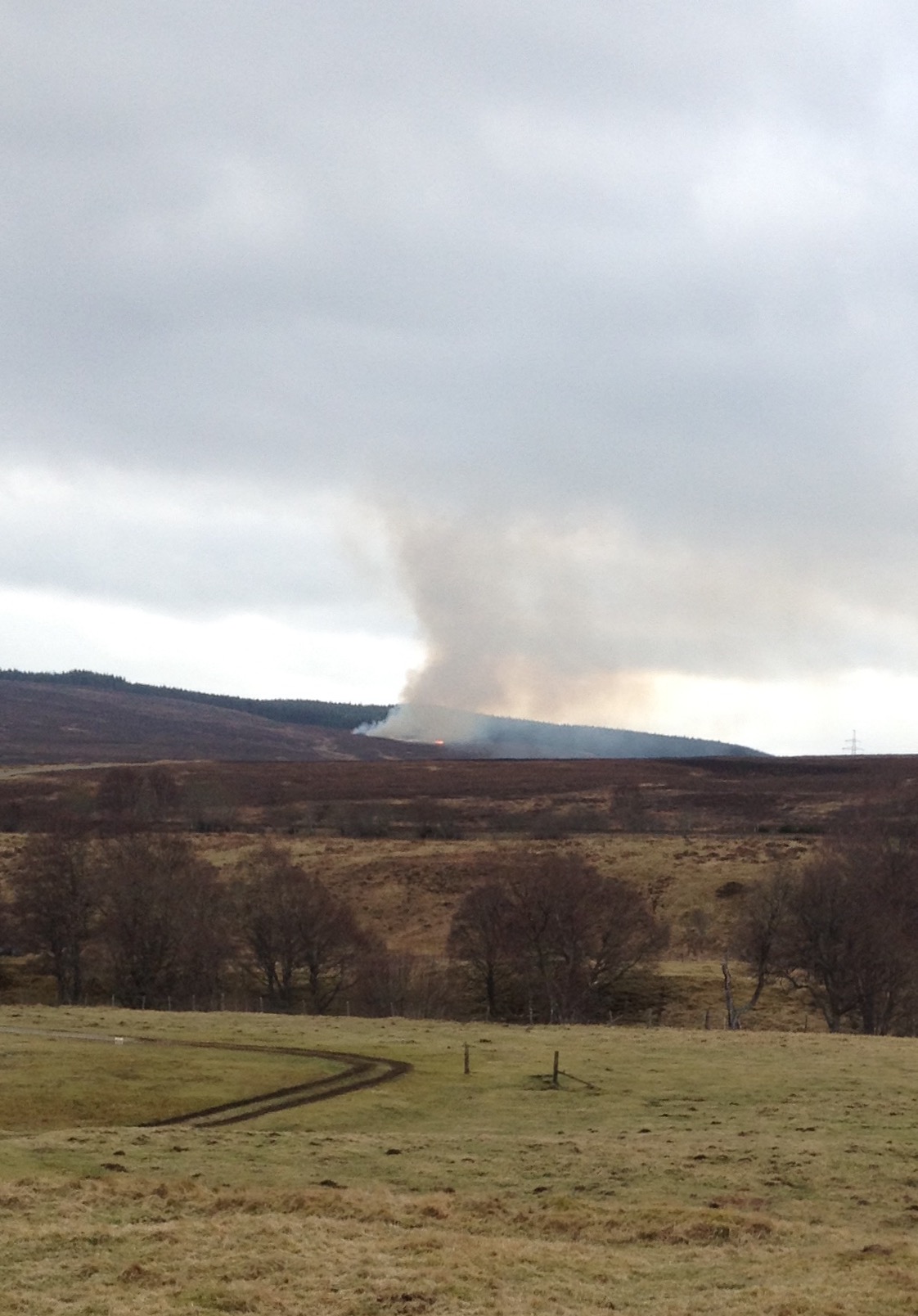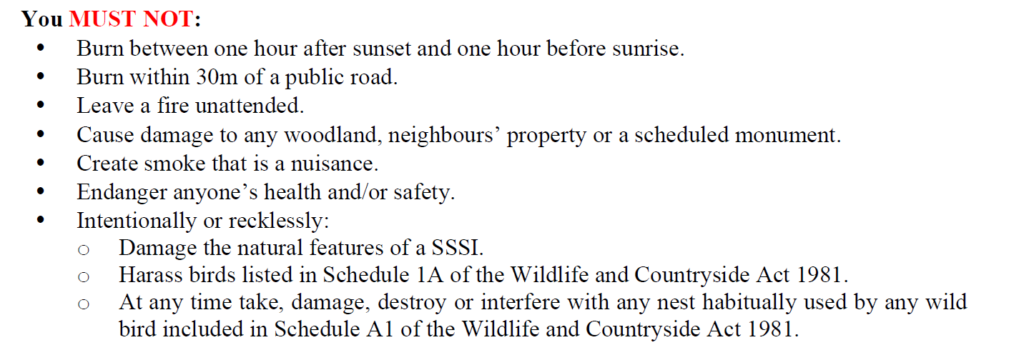
Its the muirburn season (1st October to 15th April). Following my post on muirburn at Mar Lodge (see here), REVIVE has released film footage of muirburn in the Cairngorms National Park (see here). This was covered by the Ferret yesterday (see here).
Parkswatch can add to the concerns about the impact of muirburn on the natural environment with photos taken by Dave Morris as he was heading down the A9 on 1st March. He describes “coughing and spluttering all the way from Dalwhinnie to Trinafour” where he spotted the cause of the smoke

What happened is that smoke drifted northwards from here and was then trapped by low cloud and so filled the Drumochter.
According to the Muirland Code agreed in 2017:

Clearly, the advice not to burn within 30m of the road is completely insufficient to prevent a public nuisance in places like Drumochter. Cars create air pollution but muirburn is even worse. What a way to welcome people through the “gateway” to the Cairngorms.
See also, for example, House of Lords Session 1998-99 18th Report, “Biodiversity in the European Union,: Interim Report. UK Measures, 27th July 1999. Written Evidence, memorandum from Badenoch and Strathspey Conservation Group KINVEACHY FOREST SSSI, (now also SAC) which states,
“Earlier this year a significant area of this pinewood was burnt, in several discrete patches, which shows that the burning was deliberate and not the result, for example, of one carelessly dropped match. Other parts of the forest look as if they have been burnt in previous years, there now being stands of dead trees in discrete areas. The total area burnt this year is difficult to estimate – I would guess it is about 20ha.”
This continued large-scale development of “sporting estates” is symptomatic of a more fundamental issue. It is widely regarded that, internationally, Scotland has one of the most concentrated landownership patterns – very few owners own a large proportion of Scotland – concentrating power in very few hands. And it’s getting worse, not better, according to the Scottish Land Commission.
Recent Government policy has focused on more inclusive and sustainable economic growth, and empowering communities – resulting in the Land Reform Act for example. On it’s introduction the Scottish Parliament stated that “land reform can change patterns of ownership in Scotland to ensure a greater diversity of ownership, greater diversity of investment and greater sustainable development”.
What has happened since to encourage this diversity and sustainable development? Where did those good ideas such as land value tax go? Instead we get increasingly concentrated ownership by mostly absent individuals who see “sporting estates” as a tick box for their portfolio of interests. It’s time the Scottish Government started to walk the walk, not just talk the talk.